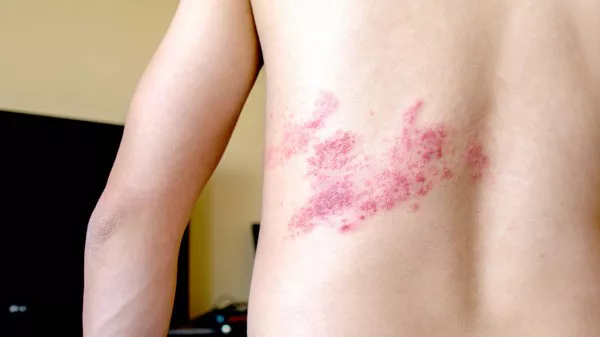Shingles, caused by the varicella-zoster virus (VZV), is a viral infection characterized by a painful rash. Often, individuals with shingles may also experience flu-like symptoms, which can add to the discomfort and uncertainty of the condition. Understanding the duration of these flu-like symptoms is crucial for managing expectations and seeking appropriate medical care.
What are Shingles and its Symptoms?
Shingles, also known as herpes zoster, is a reactivation of the varicella-zoster virus, which initially causes chickenpox. After a person recovers from chickenpox, the virus remains dormant in the nerve tissues near the spinal cord and brain. However, it can reactivate later in life, typically due to a weakened immune system or increased stress levels.
The hallmark symptom of shingles is a painful rash that usually appears as a single stripe of blisters wrapping around one side of the torso. However, before the rash becomes visible, individuals may experience various flu-like symptoms.
Flu-Like Symptoms of Shingles
Flu-like symptoms associated with shingles often precede the appearance of the rash and can last for a variable period. These symptoms may include:
1. Fever: A mild to moderate fever is common in the initial stages of shingles. The body’s immune response to the reactivated virus can cause an increase in body temperature.
2. Fatigue: Many individuals with shingles report feeling unusually tired or fatigued. This can be a result of the body’s immune system combating the virus.
3. Headache: Headaches, sometimes severe, are another symptom that can accompany shingles. The headache may persist until the virus is under control.
4. Muscle Aches: Muscle pain and soreness, similar to that experienced with influenza, can occur with shingles. This is due to the body’s inflammatory response to the virus.
5. Chills: Some people with shingles experience episodes of chills or shivering, often associated with fever.
Duration of Flu-Like Symptoms
The duration of flu-like symptoms in shingles can vary widely from person to person. In general, these symptoms can last anywhere from a few days to several weeks, depending on individual factors and the overall health of the person affected.
For most individuals, the flu-like symptoms begin a few days before the rash appears and may continue for a similar duration after the rash emerges. Therefore, the total duration of flu-like symptoms and rash can range from two to four weeks in many cases.
Factors Affecting Symptom Duration
Several factors can influence how long flu-like symptoms persist during a shingles outbreak:
1. Age: Older adults and individuals with weakened immune systems often experience more prolonged and severe symptoms.
2. Overall Health: People with underlying health conditions such as diabetes or cancer may have a more challenging time fighting off the virus, leading to longer-lasting symptoms.
3. Prompt Treatment: Starting antiviral medications early in the course of shingles can help reduce the duration and severity of both the rash and flu-like symptoms.
4. Stress Levels: High levels of stress can weaken the immune system, making it harder for the body to fight off the virus effectively.
Managing Flu-Like Symptoms
While flu-like symptoms can be uncomfortable, there are strategies to manage them during a shingles outbreak:
1. Rest: Getting plenty of rest can help support the immune system and alleviate fatigue.
2. Pain Relief: Over-the-counter pain relievers like acetaminophen or ibuprofen can help reduce fever and alleviate muscle aches.
3. Hydration: Staying hydrated is essential, especially if fever is present.
4. Antiviral Medications: Your healthcare provider may prescribe antiviral medications such as acyclovir, valacyclovir, or famciclovir to reduce the severity and duration of symptoms.
5. Topical Treatments: Calamine lotion or other soothing creams can help alleviate itching associated with the rash.
When to Seek Medical Attention
While flu-like symptoms are common with shingles, certain signs warrant prompt medical attention:
1. Severe Pain: Intense pain that persists after the rash has healed may require additional treatment.
2. Eye Involvement: Shingles affecting the eye (herpes zoster ophthalmicus) can lead to serious complications and requires urgent evaluation.
3. Weakness or Numbness: Muscle weakness or numbness should be evaluated, especially if it affects the face.
4. Worsening Symptoms: If symptoms worsen or don’t improve after a few days, consult a healthcare professional.
Conclusion
In conclusion, flu-like symptoms accompanying shingles can be challenging but are generally manageable with appropriate care. Understanding the typical duration of these symptoms and recognizing when to seek medical attention is crucial for effectively managing shingles and promoting recovery. If you suspect you have shingles or are experiencing flu-like symptoms, consult a healthcare provider for proper evaluation and treatment. Early intervention can help reduce the severity and duration of symptoms, improving overall outcomes and comfort during this challenging time.
Related Topics:
























